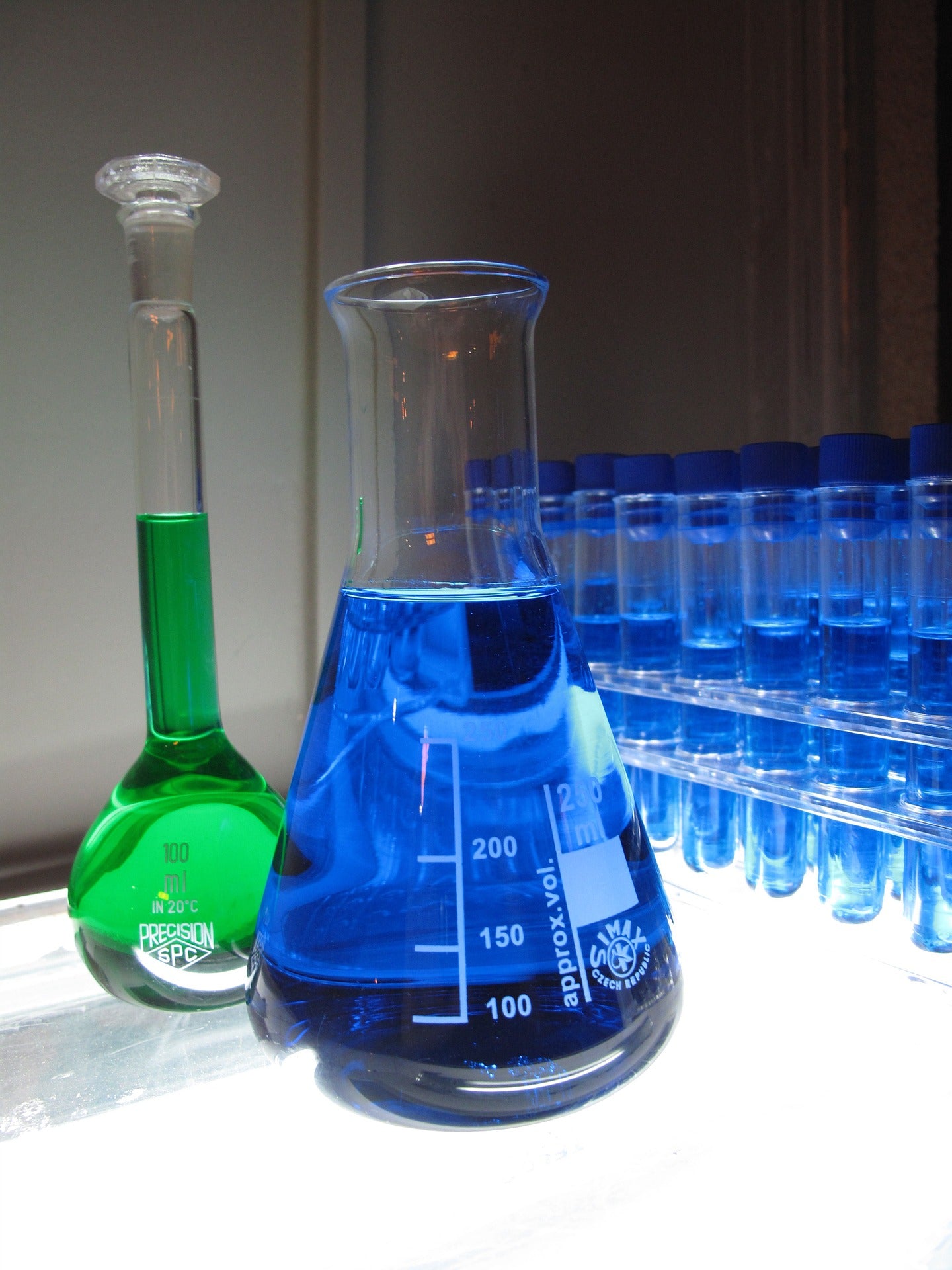
This High School Chemistry Lesson Is Essential For Good Health
Unless you graduated from high school in the past 10 years, I doubt many of you remember the specifics of the important subject I’m about to talk about.
And while your high school chemistry class probably didn’t spend much time on this subject…
It’s important I give you some background on why it’s so important.
Today I’d like to give you some information on why you need to keep your body at the proper pH level.
Because of the modern American diet, most Americans don’t have the proper pH level.
And an unbalanced pH in the body may promote the development of some serious health issues.
Here’s Why Proper pH is So Important
pH balance is incredibly important because it’s very hard for things to go “wrong” in your body if the balance between alkaline and acidic is dialed in on the sweet spot.
Now, before I dive into the specific health problems associated with an unbalanced pH, it’s important you understand what exactly pH in the body even means.
For humans, the optimal pH level is 7.365. That’s just a notch to the right of the seven you see below.

On the pH scale above (you may remember it from chemistry class), anything from 1-7 is known as an acid. The lower the number on the pH scale, the more acidic something is. And the more acidic something is, the more dangerous it may be.
Think about how battery acid eats away at human flesh and you’ll understand what I mean by dangerous.
However, just because an acid is potentially dangerous doesn’t mean that it’s not useful. For instance, the hydrochloric acid found in your stomach has a pH of 2. That’s a good thing, because if it was less acidic your body couldn’t break down food and digest it properly.
As the numbers on the scale begin to climb past seven, things become more alkaline. Too much alkalinity in the body also poses a problem. For instance, strong alkalinity results in the formation of strong chemicals like ammonia, which aren’t necessarily beneficial for human health in large amounts.
When it comes to your body, you want to be neutral, or just above neutral.
For a human body that proper ph balance is right around 7.365.
Most of you reading this will never need to worry about becoming too alkaline, simply because your diet, as well as a list of environmental factors, promote acid forming inside the body.
That being said, if your body becomes too alkaline certain metabolic processes won’t take place. This could lead to certain kinds of health conditions such as muscle cramps, muscle twitching, tingling extremities, and increased irritability.
Truth be told, most of you will deal with trying to reduce the level of acid in your body.
And this is mostly thanks to the foods you eat. I’ll spell out which foods are a problem in just a moment, but before I do I’ll unpack why high acid can pose a serious problem.
If your pH balance is too high on the acidic side, then you may develop something known as acidosis. There are multiple forms of acidosis (Hyperchloremic acidosis, Renal tubular acidosis, Dietary acidosis, Hyperchloremic acidosis, Diabetic ketoacidosis) but the one I’m focusing on today is dietary acidosis.
Dietary acidosis is the one you need to worry about since it’s caused by the foods you eat.
Dietary acidosis is associated with a number of health conditions.
These include:
- The development of nutritional deficiencies
- Compromised immune function
- Development of fundamental problems with cell replication
- Proliferation of dangerous microbes
Plus various other problems that negatively affect your health.
And if you don’t fix your diet, or figure out a way to lower excess levels of acid in the body, you’re doing quite a bit of harm to your body.
Here’s How Too Much Acid Wreaks Havoc On the Body
I’m sure it makes sense that too much acid in the body is dangerous.
But if you’re wondering exactly how too much acid forms in the first place, check out this description from Certified Holistic Health Counselor Jillian Levy, CHHC
“An increase in acid overwhelms the body’s acid-base control systems, causing the blood to tend toward acidity. Normally, the kidneys maintain proper balance of pH and electrolyte levels, including calcium, magnesium, potassium and sodium. But when we are exposed to acidic substances, these electrolytes are used to combat acidity.
The kidneys start to excrete more minerals out of the body via the urine. High degrees of acidity from diet or medical conditions force our bodies to rob minerals from our bones, cells, organs and tissues.
Cells end up lacking enough minerals to properly dispose of waste or oxygenate the body completely. Vitamin absorption is then compromised by mineral loss. Toxins and pathogens can start to accumulate in the body, and this can suppress the immune system.
Basically, you force your body to work in overtime to keep your blood at a neutral pH while destroying the nutrient levels your body innately needs to accomplish the task.
These disruptions include ruining the potassium:sodium ratio (until our diets changed so drastically, it used to be 10:1, while it’s now 1:3); reduction in magnesium levels; a dangerously low level of fiber; and an early loss of function in the kidneys, particularly during aging. “
Wondering What Causes High Acidity?
This entire time I’ve been talking about high acid I’ve been focusing on dietary causes.
So what kinds of foods promote acid forming?
Unfortunately, a lot of them. And many of them are your favorites:
- Foods high in sodium.
- Almost any processed food
- All junk food
- Sodas
- Many forms of dairy
- Any fried foods
- Foods with added sugar
- Cereals
- Peanuts and many legumes
- Alcohol
- Caffeine
- Coffee
- Processed meats like hot dogs, deli meats, cured meats and more.
The good news is while these foods promote the formation of acid, you can help combat acid forming by eating an alkaline diet, or taking alkaline balancing supplements.
An alkaline diet consists of eating foods known to reduce blood acidity.
The best thing about these foods is aside from helping reduce acid formation, they’re also extremely healthy for you too.
Here’s a sample of what you can eat to help restore your body’s pH to healthy.
- Raw foods: This would include most uncooked fruits and vegetables.
- Most leafy greens: Vegetables like swiss chard, red lettuce, spinach, mustard greens and more are extremely effective for restoring alkalinity.
- Mushrooms
- Avocadoes
- Tomatoes
- Garlic and Onion
- Healthy fats: (pure animal fats) coconut oil, ghee, fish oil, eggs, grass-fed or pasture raised cuts of meats.
- Potatoes and sweet potatoes (not fried)
- Fruits: Most fruits, but choosing fruits with the lowest amount of sugar helps best.
- Nuts and Seeds: Sunflower seeds, pistachios, almonds etc.
Building a diet around these core foods can restore your pH balance to the healthy range.
Which has the beneficial effect of reversing and preventing multiple chronic health conditions.
This Is My One-Two Punch For Tackling High Acid
If you’re reading this right now my bet is your diet includes foods that are both acid forming as well as alkaline forming.
Which means it’s going to be difficult to know whether or not you’re pH levels are in the healthy range.
For this reason I recommend picking up pH strips to test your body’s pH levels.
These strips give you an accurate way of measuring whether or not your pH levels are in the healthy range.
If you find your pH levels are too acidic you can bulk up on some alkaline forming foods…



